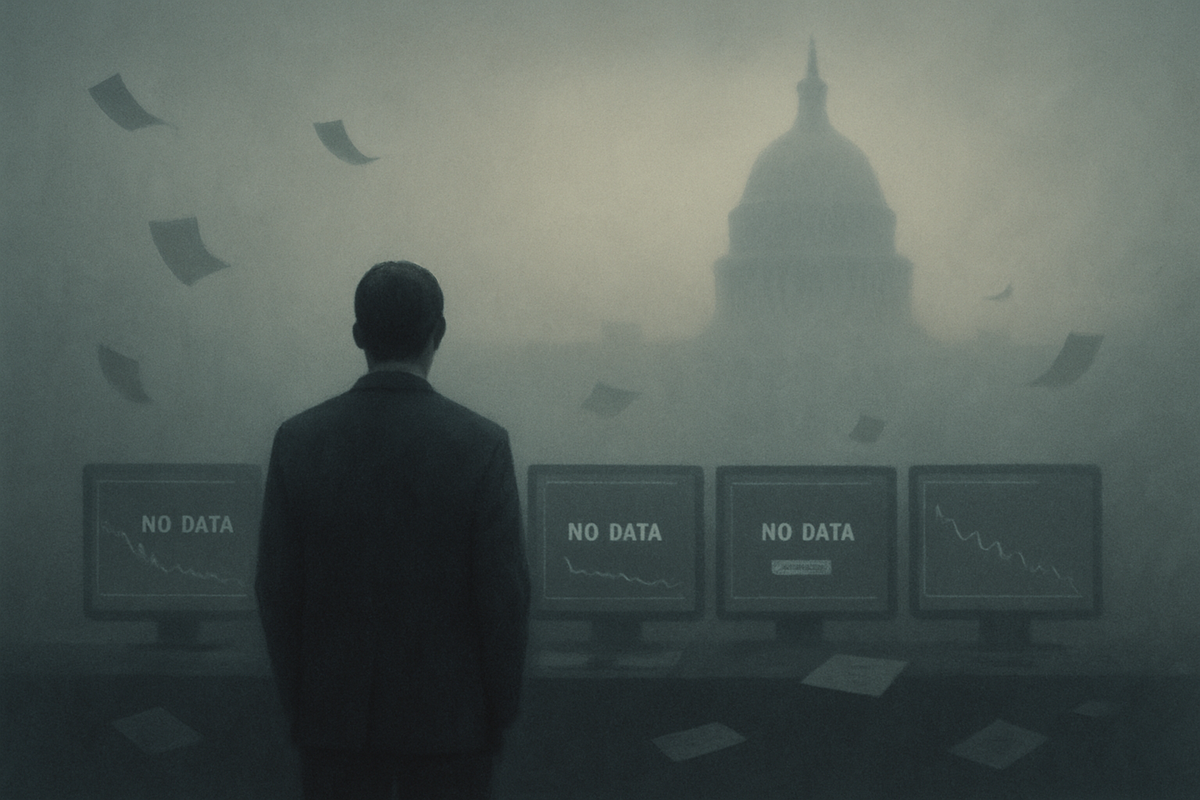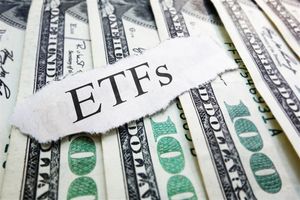
The financial markets are currently grappling with an unprecedented level of uncertainty, as a federal government shutdown has created a profound 'Economic Data Vacuum.' This critical absence of reliable, official economic statistics has left investors and analysts operating in the dark, significantly eroding market transparency and complicating crucial decision-making processes. With the usual flow of gold-standard government reports—ranging from employment figures to inflation data and GDP estimates—either halted or severely curtailed, the bedrock of fundamental analysis has been shaken.
This data drought is fostering an environment ripe for speculation and potential mispricing of assets. Without the timely release of key economic indicators from agencies like the Bureau of Labor Statistics (BLS) and the Bureau of Economic Analysis (BEA), market participants are forced to rely on fragmented private-sector data, anecdotal evidence, or simply guesswork. The resulting opacity not only increases market volatility but also poses a significant challenge for the Federal Reserve, which relies heavily on data to guide its monetary policy, potentially leading to policy misalignments that could further destabilize the economy.
The Blind Spot: A Nation Operating Without Its Economic Compass
The current 'Economic Data Vacuum' is a direct consequence of the ongoing federal government shutdown, which commenced on [Insert Date of Shutdown - e.g., October 1, 2025, or a relevant past date if the context implies it happened recently. Given the current date of 10/2/2025, it implies a very recent or ongoing shutdown.]. As various federal agencies deemed "non-essential" have ceased or scaled back operations, the pipeline of vital economic data has been abruptly cut off. This includes, but is not limited to, the suspension of monthly jobs reports, inflation updates (CPI, PPI), retail sales figures, manufacturing output, and crucial GDP estimates.
The timeline leading up to this moment has been characterized by [Insert details about political disagreements, budget stalemates, or legislative hurdles that led to the shutdown. If no specific details are provided in the prompt, generalize based on typical shutdown causes.]. Key players involved in this fiscal standoff typically include the Executive Branch (The White House), the legislative bodies (U.S. House of Representatives and Senate), and various government agencies whose funding is directly impacted. Initial market reactions have been predictably cautious, with increased volatility observed across major indices. Investors are seen rotating into traditional safe-haven assets such as short-duration U.S. Treasuries and gold, while sectors sensitive to economic health, like consumer discretionary and industrials, are experiencing heightened uncertainty and downward pressure. The lack of clarity has also led to a noticeable slowdown in corporate planning and investment decisions, as businesses struggle to forecast demand and assess market conditions without reliable government statistics.
Navigating the Data Desert: Winners, Losers, and Corporate Repercussions
In this era of limited economic visibility, certain companies and sectors are better positioned to weather the storm, while others face significant headwinds. Companies with strong balance sheets, diversified revenue streams, and less reliance on immediate economic data for operational decisions tend to fare better. For instance, large, established technology companies like Apple (NASDAQ: AAPL) or Microsoft (NASDAQ: MSFT), with their vast ecosystems and global reach, might experience less direct impact on their day-to-day operations compared to businesses heavily reliant on domestic consumer spending or government contracts. Similarly, utilities and consumer staples companies such as Procter & Gamble (NYSE: PG) or NextEra Energy (NYSE: NEE), which provide essential goods and services, often exhibit defensive characteristics during periods of economic uncertainty, as demand for their products remains relatively stable.
Conversely, sectors highly sensitive to economic cycles and government data are likely to suffer. The housing market, for example, which relies heavily on data from the Census Bureau and other agencies for housing starts, building permits, and sales figures, faces severe disruption. This directly impacts homebuilders like D.R. Horton (NYSE: DHI) and Lennar Corporation (NYSE: LEN), as well as financial institutions involved in mortgage lending. Retailers, particularly those in the discretionary spending category, will struggle to gauge consumer confidence and spending patterns without official retail sales reports, affecting companies like Target (NYSE: TGT) and Starbucks (NASDAQ: SBUX). Furthermore, any company with significant government contracts or those awaiting regulatory approvals from agencies operating with skeleton staff—such as biotechnology firms awaiting FDA approvals or energy companies needing EPA permits—could experience costly delays and operational bottlenecks. The overall reduction in transparency could also lead to increased credit risk for smaller businesses, making it harder for them to secure financing.
Wider Implications: A Shadow Over Global Confidence and Policy
The 'Economic Data Vacuum' extends its reach far beyond immediate market jitters, casting a shadow over broader industry trends, regulatory frameworks, and global confidence in the U.S. economy. This event underscores the increasing interconnectedness of financial markets with governmental stability and data integrity. In a world already grappling with geopolitical tensions and inflationary pressures, the absence of reliable U.S. economic data can trigger ripple effects, impacting global supply chains, international trade agreements, and foreign investment decisions. Competitors in other developed nations, particularly those in Europe and Asia, might gain a temporary advantage in attracting investment as the U.S. market becomes less transparent.
Historically, federal shutdowns, while often resolved relatively quickly, have demonstrated a consistent pattern of causing minor, albeit noticeable, dips in GDP growth for each week they persist. The longer the current shutdown, the more significant this drag becomes, potentially jeopardizing the Federal Reserve's ability to accurately assess economic health and calibrate its monetary policy effectively. The Fed's dual mandate of maximizing employment and maintaining price stability becomes exceedingly difficult to pursue when key indicators are unavailable, raising the risk of either over-tightening or under-tightening, with long-term consequences for inflation and growth. Regulatory agencies, already operating with reduced staff, face backlogs that can delay crucial business activities, from IPOs to mergers and acquisitions, creating a bottleneck for innovation and capital deployment. The current situation echoes past shutdowns, such as those in 2013 and 2018-2019, where similar data disruptions occurred, leading to periods of heightened market anxiety and calls for more stable fiscal governance.
What Comes Next: Navigating the Fog of Uncertainty
The path forward from this 'Economic Data Vacuum' is fraught with both challenges and potential opportunities. In the short term, markets will likely remain highly sensitive to any news regarding a resolution to the federal shutdown. A swift agreement could lead to a relief rally, as delayed economic data is finally released, providing much-needed clarity. However, a prolonged shutdown would deepen the uncertainty, potentially leading to a more significant economic slowdown as businesses delay investments and hiring. Investors should anticipate continued volatility and a heightened focus on corporate earnings reports from publicly traded companies, as these will become one of the few reliable sources of current economic activity.
In the long term, this event may prompt strategic pivots across various sectors. Companies might invest more in proprietary data analytics and alternative data sources to mitigate their reliance on government statistics. Policymakers, too, might face renewed pressure to establish mechanisms that insulate essential data collection and dissemination from political impasses, ensuring the continuity of vital economic intelligence. Market opportunities may emerge in defensive sectors and high-quality companies with robust fundamentals that can withstand periods of economic ambiguity. Conversely, highly leveraged companies or those in nascent industries heavily dependent on government support or regulatory clarity could face significant challenges. Potential scenarios range from a quick resolution and a rapid data catch-up, leading to a "snap-back" in confidence, to a protracted stalemate that could trigger a more sustained downturn and a reevaluation of U.S. economic resilience.
Wrap-up: The Enduring Impact of a Data-Starved Market
The 'Economic Data Vacuum' resulting from the federal government shutdown serves as a stark reminder of the critical role that transparent, timely, and reliable economic data plays in maintaining market efficiency and investor confidence. The current situation has underscored the fragility of financial markets when deprived of their fundamental informational inputs, leading to increased speculation, heightened volatility, and significant challenges for both corporate decision-makers and monetary policymakers. The immediate impact has been a palpable sense of uncertainty, causing a shift towards safe-haven assets and a slowdown in business activity.
Moving forward, investors must remain vigilant, prioritizing companies with strong fundamentals, clear earnings visibility, and resilient business models. The market will undoubtedly be driven by news of the shutdown's resolution, and the subsequent release of backlogged data will be closely scrutinized for insights into the true state of the economy. This event highlights the enduring importance of governmental stability and the continuous flow of information for a healthy financial ecosystem. The lasting impact may include a renewed emphasis on fiscal responsibility in Washington and a greater appreciation for the often-unseen infrastructure of economic data collection. Investors should closely watch for signs of political compromise, the resumption of data releases, and any shifts in Federal Reserve communication in the coming months, as these will be key indicators for assessing the market's trajectory.
This content is intended for informational purposes only and is not financial advice







